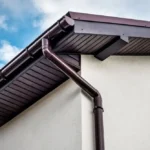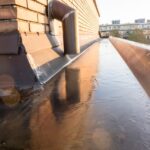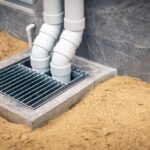Winter can be a challenging season for homeowners, especially when dealing with the issues of roof drain freezing. Ensuring your roof drainage system works efficiently during the colder months is crucial for the protection of your home. In this article, we will discuss various methods on how to prevent roof drain freezing, ensuring your home remains safe and dry.

Understanding Roof Drain Freezing
Before diving into prevention techniques, it is essential to understand why roof drains freeze. During winter, the combination of low temperatures and moisture can lead to the formation of ice within your roof’s drainage system. This ice buildup can block the flow of water, causing it to back up and potentially damage your roof and home interior.
Why It’s Important to Prevent Freezing
Preventing roof drain freezing is not just about avoiding inconvenience; it is about safeguarding your home from potential water damage. When drains freeze, the water trapped in them can seep into your roof, leading to leaks, mold growth, and structural damage. Thus, taking proactive measures is vital to avoid costly repairs.
Effective Methods for Preventing Roof Drain Freezing
Insulate Your Roof Drains
Insulation is one of the most effective ways to prevent freezing. By insulating your roof drains, you minimize the exposure to cold air, which helps keep the water inside from freezing. Consider wrapping exposed pipes with foam insulation or using heat cables for added protection.
Regular Maintenance and Cleaning
Keeping your roof drains clean and free from debris is essential. Leaves, twigs, and dirt can trap moisture, which contributes to freezing. Regularly inspect and clean your drains, especially before the winter season, to ensure they are clear and functioning correctly. For more detailed tips, you can visit this roof drainage maintenance checklist.
Install Heat Cables
Heat cables, also known as heat tape, are a practical solution for preventing roof drain freezing. These cables can be installed along the length of your drainpipes and are designed to keep them warm enough to prevent ice formation. This method is especially useful for areas with harsh winters.
Ensure Proper Drainage Slope
Ensuring that your roof has the proper drainage slope can significantly reduce the risk of freezing. A well-designed slope allows water to flow freely towards the drains, reducing the chances of standing water, which is more likely to freeze.
Use De-Icing Agents
De-icing agents can be applied to your roof drains to prevent ice buildup. These agents work by lowering the freezing point of water, thus minimizing the risk of freezing. However, it is important to use these products according to the manufacturer’s instructions to avoid damaging your roof materials.
Additional Tips for Winter Roof Care
Trim Overhanging Branches
Overhanging tree branches can contribute to roof drain freezing by depositing leaves and other debris onto your roof. Trimming these branches can help keep your roof clean and reduce the risk of ice formation.
Monitor Weather Conditions
Keeping an eye on the weather forecast can help you prepare for incoming cold fronts. If a severe drop in temperature is predicted, take extra precautions to ensure your roof drains are clear and protected.
Inspect Your Roof Regularly
Regular roof inspections are crucial for identifying potential problems before they become serious issues. Look for signs of damage, such as cracks or leaks, and address them promptly to maintain the integrity of your roof drainage system. For more guidance, check out this roof drainage and mold prevention guide.
Conclusion
Preventing roof drain freezing is an essential part of winter home maintenance. By understanding the causes of freezing and implementing effective prevention methods, you can protect your home from water damage during the colder months. Remember, proactive maintenance is key to ensuring your roof drainage system remains in good working order.

FAQs
How often should I clean my roof drains?
It is recommended to clean your roof drains at least twice a year, ideally before the winter and after fall. Regular cleaning helps prevent blockages and ensures your drainage system functions efficiently.
Can I install heat cables myself?
While it is possible to install heat cables yourself, it is recommended to hire a professional to ensure they are installed correctly and safely. Proper installation is crucial for optimal performance.
What should I do if my roof drains have already frozen?
If your roof drains have already frozen, it is important to address the issue immediately. You can try using a de-icing agent or applying gentle heat using a hairdryer. However, for severe cases, it is best to contact a professional for assistance.
This article contains affiliate links. We may earn a commission at no extra cost to you.







